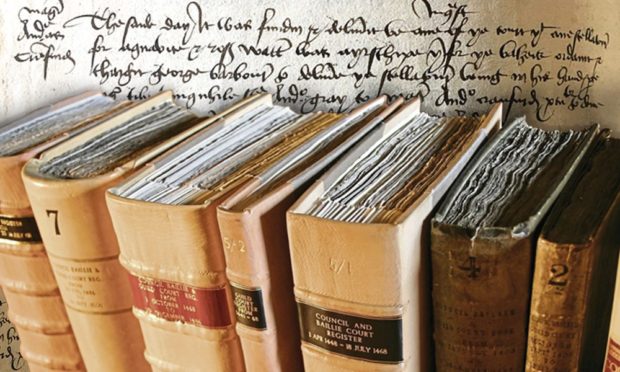May 15 is World Whisky Day when I, along with many others, will be indulging in a dram or two…responsibly, of course!
Aberdeen has a remarkably long connection with whisky. Indeed, the earliest documented reference to a still for making “aqua vite” appears in an entry dated 20th June 1505 in volume 8 of the Aberdeen Burgh Registers. “Aqua vite” in Latin means “water of life” and is the Middle Scots word for whisky. The entry was discovered by a researcher from the University of Aberdeen in 2019.
The Aberdeen Burgh Registers, kept by the City Archive at the Town House, begin in an unbroken run in 1398 and are the oldest and most complete set of records of any Scottish town. Their historical significance is recognised by UNESCO, which included the 8 volumes covering 1398 to 1511 in their Memory of the World Register in 2013.
The find in the Aberdeen records is significant because it suggests that whisky was being produced and consumed by a wider sector of society than previously thought. The earliest evidence for the production of the drink is recognised as coming from an account dated 1494-1495 for the king’s chamberlain of the sheriffdom of Fife, in which eight bolls of malt were delivered to Friar John Cor to make “aqua vite”. The entry in the Aberdeen records illustrates that whisky was not confined to the royal court.
The reference to the still appears in the inquest at the bailie court into the inheritance arising from the death of a man named Sir Andrew Gray who lived on Guestrow. Among his “moveable possessions” was “ane stellatour (still) for aquavite and ros wattir (rose water)”. Andrew Gray was a chantry chaplain in Aberdeen’s parish church of St Nicholas, and we also know that he was associated with the burgh’s grammar school in 1499. He died in December 1504 and it is likely that he made use of his still during his lifetime.
The process behind distillation would have meant that a certain level of scientific knowledge was required to operate the still. Given that the University of Aberdeen was founded just 10 years prior to the entry in question and that another person mentioned in the passage is almost certainly the well-known composer Robert Carver, a picture begins to emerge of early 16th Century Aberdeen as a thriving renaissance town….cheers!
Aberdeen City & Aberdeenshire Archives reopens on 17th May at Old Aberdeen House. For more details on how to book an appointment, please email archives@aberdeencity.gov.uk
More information about World Whisky Day can be found at: worldwhiskyday.com

